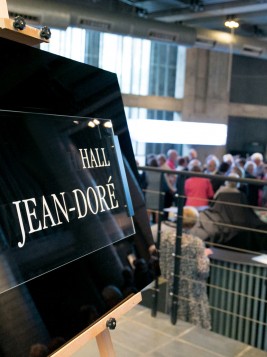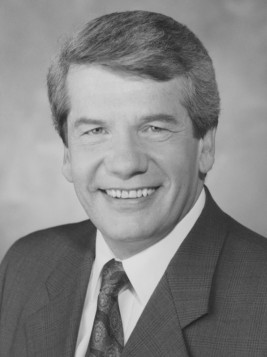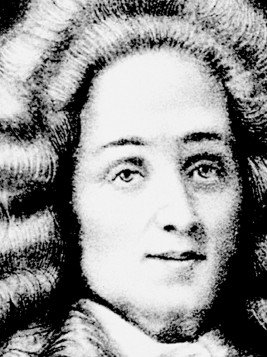Life in Montréal
Jean Doré, the mayor who opened up Montréal’s birthplace
Pointe-à-Callière, Montréal’s Archaeology and History Complex, is a name that constantly comes up when listing the many accomplishments of Jean Doré, mayor of Montréal from 1986 to 1994—and with good reason!
Recently, the current mayor of Montréal, Denis Coderre, announced his intention to obtain approval from Québec’s Toponymy Commission to change the name of the beach in Parc Jean-Drapeau to Jean-Doré Beach. But did you know that there is a direct link between Pointe-à-Callière and Doré Beach?
Located in Old Montréal, the Museum—which was inaugurated on May 17, 1992 as part of the celebrations marking the 350th anniversary of Montréal—is built on the very site where the city was founded. Several archaeological digs were carried out on the site between 1980 and 1990, during which archaeologists unearthed numerous architectural remains along with hundreds of thousands of remnants and objects bearing witness to over 1,000 years of history on the site. There could not have been a more symbolic place to celebrate Montréal’s 350th birthday.
On the initiative of Jean Doré, then Mayor of Montréal, the governments of Canada and Québec decided to join forces and invest in a joint development project bringing together four sites designated by Pointe-à-Callière, making sure that the new institution would be ready in time for the important anniversary.
From Callière’s point to Île Notre-Dame
Designing, building, and putting together a new museum is already quite a complex operation in itself. Imagine building a museum above unique, irreplaceable, and fragile archaeological remains that must, at all costs, be preserved for future generations!
To accomplish the task, the exposed archaeological sites were completely re-covered with compacted sand to protect them during construction. Once the structures were erected above the remains, archaeologists once again picked up their trowels, brooms, and other tools, and proceeded to dig out the sand-protected remains yet again. All of the sand taken out of the Museum was then transported by truck to Île Notre-Dame for use in the development of “Doré” Beach. A wonderful example of re-use and recycling!
It should be noted that Jean Doré was among Pointe-à-Callière’s earliest and most fervent supporters, backing the idea of preserving and showcasing the city’s birthplace, and of raising awareness and fostering an appreciation of Montréal’s history. This achievement was the result of a model partnership, with teams from the City and from the governments of Canada and Québec bringing this ambitious project to completion and delivering it on time.
On May 17, 1992, it was with much emotion and great pride that Jean Doré—accompanied by the Prime Minister of Canada, the Honourable Brian Mulroney; the Premier of Québec, Robert Bourassa; and several ministers and French dignitaries—inaugurated this new museum, the only major archaeology museum in Canada, which has gone on to become a not-to-be-missed tourist attraction in our cultural metropolis of Montréal.
Through his vision, his love for Montréal, his sense of history, and his leadership, Jean Doré enabled the birthplace of Montréal and traces of its first inhabitants to be preserved and exhibited. And in doing so, with his partners, he also left behind this legacy for future generations.
Jean Doré passed away on June 15, 2015 after a battle with pancreatic cancer. To pay tribute to him and highlight his role in the creation of Montréal’s Archaeology and History Museum, Pointe-à-Callière renamed its lobby—which now bears the name Jean Doré Hall—in his honour on June 16, 2016.



